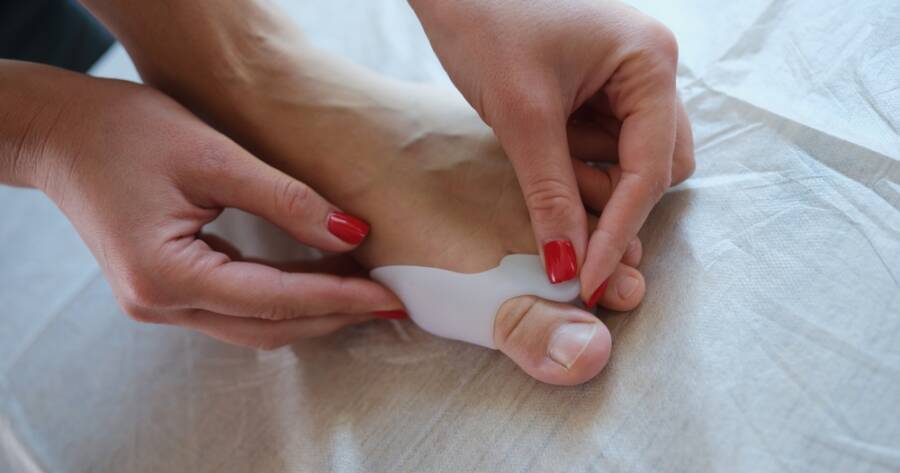Our feet have an important job, bearing the weight of our bodies and taking us wherever we need to go. Yet, they often receive little attention until problems arise. Whether you’re an athlete, hiker, or simply someone who spends a lot of time on their feet, having a well-stocked foot first aid kit and knowledge of preventive measures can make a significant difference in foot health and comfort. Understand essential products and techniques for preventing and treating common foot issues.
Prevention: The First Line of Defense
Proper Footwear
Selecting the right shoes is crucial for foot health. Barefoot shoes are minimalist footwear designed to simulate walking barefoot by providing a natural foot experience with distinctive features. These shoes typically have a wide toe box allowing toes to move freely, a zero-drop (flat) sole with minimal thickness (usually less than 4mm), and are extremely lightweight, enabling the foot to move and function as it would without traditional shoe constraints. Barefoot shoes have gained popularity due to their benefits:
- Strengthening foot muscles: Barefoot shoes allow feet to move naturally, helping to build strength in the muscles and tendons.
- Improving proprioception: These shoes enhance the sensory feedback between your feet and brain, leading to better balance and posture.
- Reducing injury risk: By promoting a more natural gait, barefoot shoes may lower the risk of ankle and knee injuries.
However, it’s important to transition gradually to barefoot shoes to avoid overstraining your feet.
Toe Spacers
Toe spacers are simple yet effective tools for foot health. They’re small devices typically made of soft, flexible materials like silicone or gel that are placed between the toes to create space and promote proper toe alignment. Athletes and individuals seeking to improve foot health often use toe spacers to:
- Correct alignment: They help align toes properly, reducing the risk of deformities like bunions or hammertoes.
- Improve circulation: By creating space between toes, they enhance blood flow, promoting healing and reducing inflammation.
- Strengthen muscles: Toe spacers encourage toe muscles to stretch and activate, beneficial for activities requiring strong toe gripping.
Foot Exercises and Stretches
Incorporating foot exercises into your daily routine can dramatically enhance balance, mobility, and overall foot health. These movements help strengthen small stabilizing muscles, improve flexibility, and reduce the likelihood of common issues like plantar fasciitis or arch pain. Whether you’re recovering from an injury or simply want to support your feet after long hours of standing or walking, these simple yet effective exercises can make a noticeable difference in comfort and endurance.
- Toe spreads: Spread your toes wide, hold for a few seconds, then release. Repeat 10-15 times.
- Heel raises: Stand on a flat surface, rise onto your toes, hold for a few seconds, then lower. Repeat 15-20 times.
- Arch lifts: While seated, keep your toes on the ground and lift your arch, hold for a few seconds, then release. Repeat 10-15 times.
Essential First Aid Products
Blister Prevention and Treatment
Blisters are one of the most common and frustrating foot issues, especially for hikers, runners, and anyone breaking in new shoes. Preventing friction is key—once a blister forms, it can be painful and prone to infection if not properly treated. Having the right products on hand ensures you can protect your skin before irritation starts and treat blisters quickly when they do occur.
- BodyGlide Foot Anti Blister Balm: Apply before activities to reduce friction and lower blister risk.
- Compeed Blister bandages: These hydrocolloid bandages provide cushioning and protection for blistered areas.
- Moleskin: Use this adhesive padding to protect areas prone to blistering.
Moisture Management
Maintaining dry, healthy feet is crucial for avoiding fungal infections, odor, and discomfort. Excess moisture can lead to skin breakdown and increase the risk of blisters, especially during intense physical activity. Incorporating moisture-control products into your daily routine helps keep your feet fresh and protected, no matter how active your lifestyle.
- Moisture-wicking socks: Look for socks containing merino wool or coolmax material to keep feet dry.
- Foot powder: Use in shoes to absorb excess moisture and odors.
- Moisturizing cream: Apply to prevent dry, cracked skin, which can lead to infections.
Take Care of Your Feet
Remember, prevention is key when it comes to foot health. Regular foot care, proper footwear, and attention to early signs of problems can save you from more serious issues down the road. By maintaining a well-stocked foot first aid kit and incorporating preventive measures like toe spacers, foot exercises, and appropriate footwear, you’ll be taking important steps towards happier, healthier feet.

